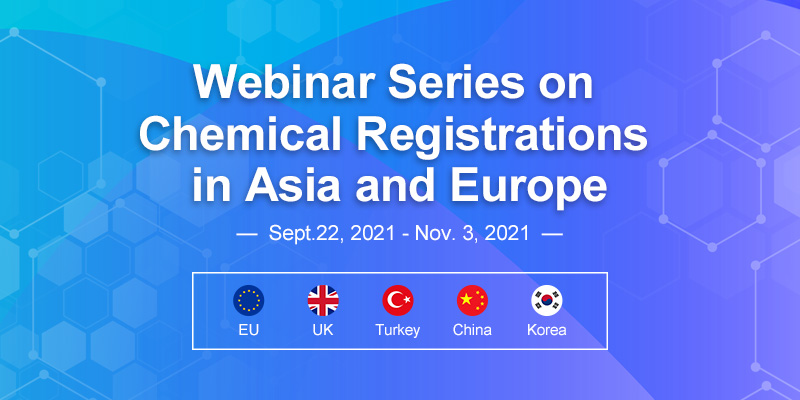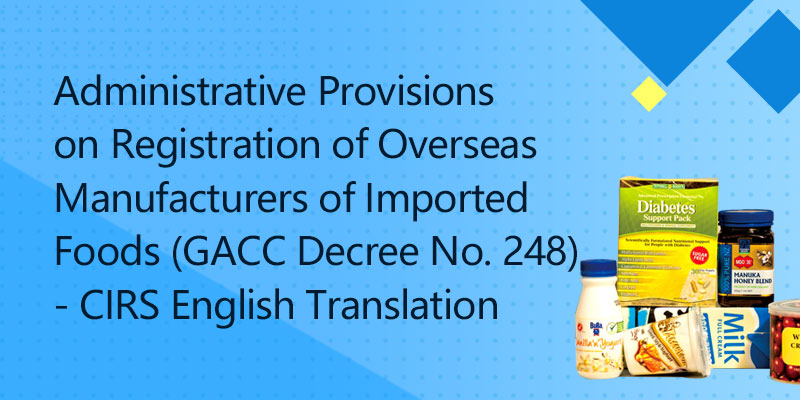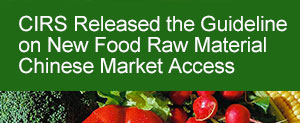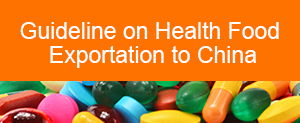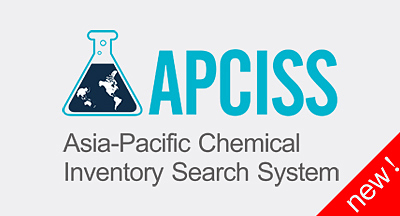In the previous article, CIRS summarized the similarities of new food raw material registration and new food additive registration. This article will further elaborate on the differences between them.
Definition
|
|
New Food Raw Material |
New Food Additive |
|
Definition |
New food raw material refers to the following substances that have no traditional eating habits in China, including: 1) Animals, plants and microorganisms; 2) Components extracted from animals, plants and microorganisms; 3) Food ingredients that have changed in the original structure; 4) Other newly developed food ingredients. |
Which substance should apply for new food additive? 1) Food additives that have not been listed in GB 2760 Usage of Food Additives and GB 14880 Usage of Nutrition Enhancers; 2) Food additives that have not been listed in subsequent notices issued by NHC; 3) Food additives of which the usage scope or dosage planned to be expanded. |
|
Other requirements |
New food raw materials should have the characteristics of food raw materials and conform to the requirements of nutritive. It shall be non-toxic, harmless, and not cause any acute, sub-acute, chronic or other potential hazards to human body. |
Food additives should be technically necessary and proven safety after risk assessment. |
Differences
1. Application Dossier
|
New Food Raw Material |
New Food Additive |
|
1) Application form; 2) Research and development report of new food raw material; 3) Safety assessment materials; 4) Manufacturing technique; 5) Relevant standards (including safety requirements, quality specification requirements and test methods, etc.); 6) Label and specification; 7) Research and utilization situation at home and abroad, and related-safety assessment materials; 8) Other materials that contribute to safety review; 9) Power of attorney (when the registration application run by entrusted agencies); |
1) Application form; 2) Common name, functional classification, dosage and application scope; 3) Materials or documents providing the technically necessity and using effect; 4) Quality specification requirements and their test methods, manufacturing technique and test method of additive in food; 5) Safety assessment materials (when apply for expanding the usage scope or dosage, this material can be exempted); 6) Label and specification; 7) Other materials that contribute to the safety review, such as legal permission of producing and using from other countries (regions) or international organizations; 8) Power of attorney (when the registration application run by entrusted agencies); |
Note: For imported new food raw materials/new food additives, two additional certification documents should be submitted.
Highlights
New food raw material emphasized the nutrition and safety of the raw material, while the new food additive usually play a role in improving food quality or processing technology in certain/several types of food, with a clear function, such as sweetener, thickener, coloring, food flavor, and so on.
Therefore, in addition to the common toxicological safety assessment documents, there are obvious differences in the focus of dossiers when applying for new food raw material and new food additive, which are mainly as follows:
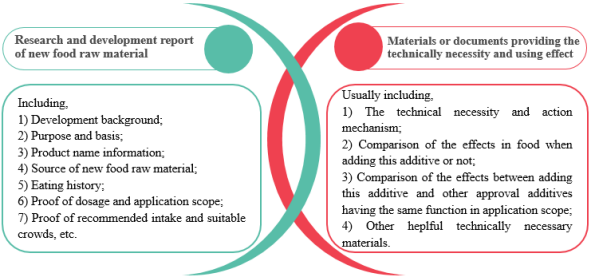
2. Test Requirements
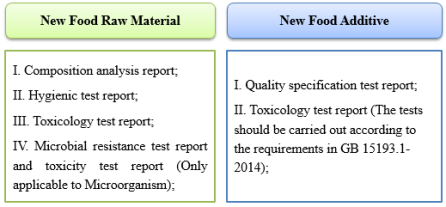
The main differences are the requirements in toxicology test. Detailed information are listed as follows.
Toxicology requirements of new food raw materials
According to the different approval status (including traditional eating habits) in the world, the required toxicology test for new food raw material are different:
|
Eating habits
Item |
Fauna and Flora (including fungi) |
Microorganisms |
||||
|
No traditional eating habit of domestic and overseas |
Only have traditional eating habit in few foreign countries or local areas |
Widely approved to use in many countries |
No traditional eating habit of domestic and overseas |
Only have traditional eating habit in few foreign countries or local areas |
Widely approved to use in many countries |
|
|
Acute oral toxicity test |
Y |
Y |
Y |
- |
- |
- |
|
Three genetic toxicity tests |
Y |
Y |
Y |
Y |
Y |
- |
|
90-day oral toxicity test |
Y |
Y |
- |
Y |
Y |
- |
|
28-day oral toxicity test |
- |
- |
Y |
- |
- |
- |
|
Teratogenic and reproductive toxicity tests |
Y |
Y* |
- |
Y |
- |
- |
|
Chronic toxicity and carcinogenicity tests |
Y |
- |
- |
- |
- |
- |
|
Metabolic test |
Y |
- |
- |
- |
- |
- |
|
Acute oral toxicity test/Pathogenicity test |
- |
- |
- |
Y |
Y |
Y |
|
Two genetic toxicity tests |
- |
- |
- |
- |
- |
Y |
Note: (1) "Y" indicates that the test needs to be carried out; "-" indicates that the test does not require;
(2) * Reproductive toxicity tests are generally not required.
Toxicology requirements of new food additives
The test items of new food additive should be carried out according to the requirements in GB 15193.1-2014 Procedures for Toxicological Evaluation of Food Safety. The tests required for each category are summarized below:
|
Category |
Certificate |
Requirement/Item |
|
Food flavor |
Permitted by two or more organizations (WHO, FEMA, COE, IOFI) |
No toxicology tests are needed. |
|
Permitted by only one international organization. |
Acute oral toxicity test, One genetic toxicity tests |
|
|
Without permission of international organization. |
Acute oral toxicity test, Three genetic toxicity tests, 28-day oral toxicity test |
|
|
The high-purity natural flavor extracted from the edible parts of animals and plants, its chemical structure and related information do not suggest unsafe. |
No toxicology tests are needed. |
|
|
Enzyme |
Produced by edible parts of plants and animals with a long history of safe consumption, WHO has published (or does not require) daily allowable intake or approved by multiple countries or organizations. |
No toxicology tests are needed. |
|
Produced by other sources, complete toxicological information, WHO has published (or does not require) daily allowable intake or approved by multiple countries or organizations. |
When quality specifications are consistent with international quality standards: acute oral toxicity test, three genetic toxicity tests are required. When quality specifications are inconsistent with international quality standards: additional 28-day oral toxicity test is required. |
|
|
Produced by other sources, incomplete toxicological information, WHO has not published daily allowable intake or approved by only one country. |
Acute oral toxicity test, Three genetic toxicity tests, 28-day oral toxicity test |
|
|
Produced by other sources and without approval by other countries. |
Acute oral toxicity test, Three genetic toxicity tests, 90-day oral toxicity test, Teratogenic test |
|
|
Other food additives (including nutrition enhancers) |
Complete toxicology information, WHO has published (or does not require) the allowable intake or approved by multiple countries or organizations. |
When quality specifications are consistent with international quality standards: acute oral toxicity test, three genetic toxicity tests are required. When quality specifications are inconsistent with international quality standards: additional 28-day oral toxicity test is required. |
|
WHO has not published daily allowable intake and approved by only one country. |
Acute oral toxicity test, Three genetic toxicity tests, 28-day oral toxicity test, Teratogenic test |
|
|
Single-component which is high-purity additive made from animals and plants or microorganisms and approved by an international organization or a country. |
Acute oral toxicity test, Three genetic toxicity tests, 28-day oral toxicity test |
|
|
Single-component which is high-purity additive made from animals and plants or microorganisms and without approval by any organization or country. |
Acute oral toxicity test, Three genetic toxicity tests, 90-day oral toxicity test, Teratogenic test |
3. Safety Assessment Report of New Food Raw Material
Compared with the dossiers of new food additive registration, a safety assessment report composed by authorized institution in China is required for registration of new food raw material. According to Regulations on Declaration and Acceptance of New Food Raw Materials, this report should be composed according to the hazard factor identification, hazard characterization, exposure assessment, and risk characterization.
This safety assessment report is a "proprietary" document for new food raw material registration, which generally takes 3-6 months to compose. It’s equivalent to that the applicant invites the authorized institution to conduct a “pre-evaluation” of the applied substance before submitting to the NHC.
4. Review Conclusions
There are three types of review conclusions for "three new foods": recommended for approval; recommended for disapproval; and postponement for re-examination (supplement materials). While the review conclusions of new food raw materials also include a unique form of review conclusions-termination of review (Please click the link for more details: Understanding of the "Termination of Review" of New Food Raw Materials ).
For the applicants of new food raw material, getting the results of termination of review such as "substantial equivalence", "general food management" and "local specialty food management" also means the raw material is approved, enterprises can carry out production/import or other matters in accordance with the review conclusions.
Conclusion
This article compares the differences between new food raw material registration and new food additive registration. In addition to fully considering the actual use of this substance, enterprises who want to carry out the application should also pay attention to the detailed registration requirements of them. If you have any needs or questions, please contact us at service@cirs-reach.com.

